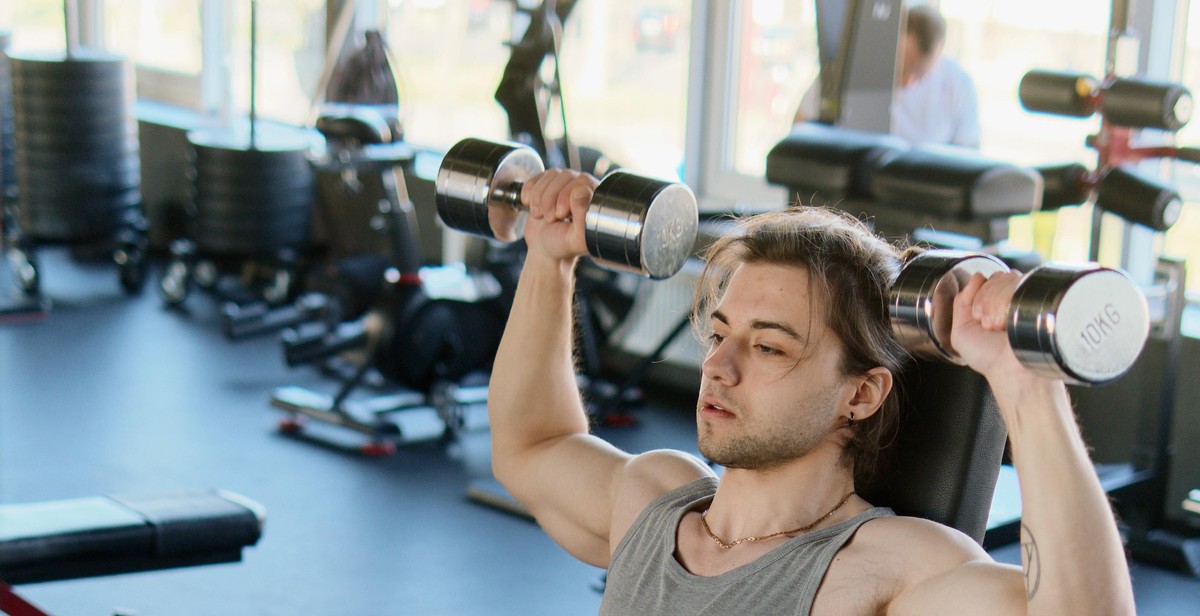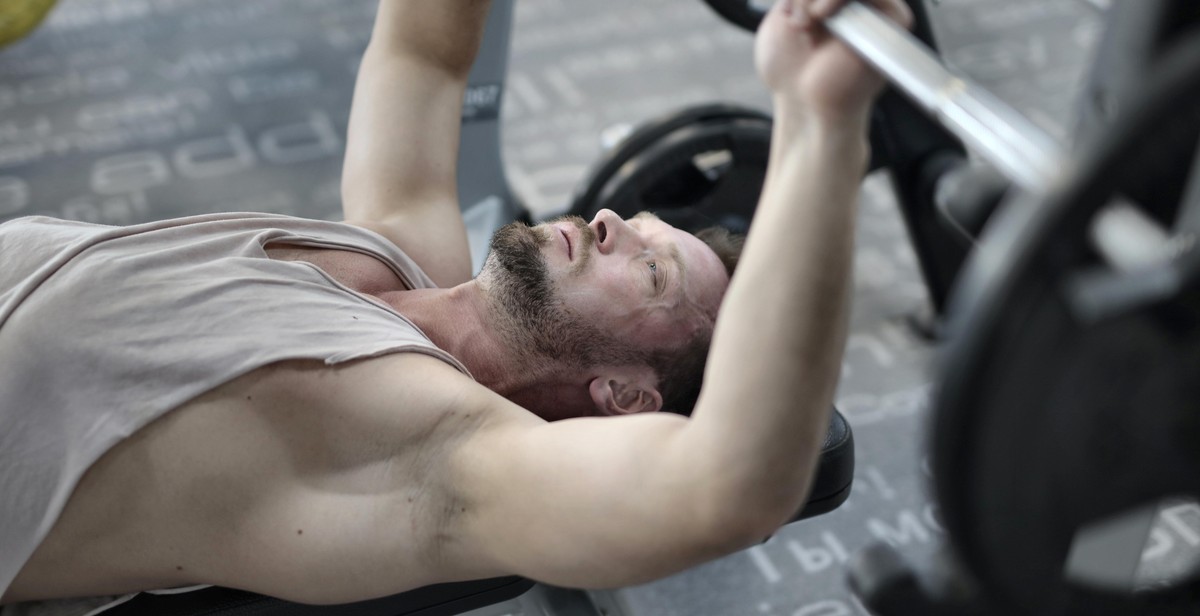How to Perform Correct Bench Press Technique for Upper Body Strength
Bench press is one of the most popular exercises in weight training and is an excellent way to build upper body strength. However, performing the exercise with incorrect technique can lead to injury and ineffective results.
The Importance of Proper Technique
Proper technique is essential for maximizing the benefits of bench press and minimizing the risk of injury. Correct form ensures that the targeted muscles are being worked effectively, while also reducing the strain on other areas of the body. Moreover, using proper technique can help you lift more weight and achieve better results.
The Muscles Involved in Bench Press
Bench press primarily targets the chest muscles (pectoralis major and minor), but also works the triceps, shoulders, and back muscles. Knowing which muscles are involved in the exercise can help you focus on the correct form and make adjustments where necessary.
The Correct Technique for Bench Press
The correct technique for bench press involves several key elements, including proper grip, foot placement, and body alignment. These elements work together to ensure that the weight is lifted safely and effectively.
- Choose a grip that is comfortable and allows for proper wrist alignment.
- Place your feet flat on the ground, shoulder-width apart.
- Arch your back slightly and keep your shoulders pulled back and down.
- Lower the weight to your chest, keeping your elbows tucked in.
- Push the weight back up, exhaling as you lift.
By following these guidelines, you can perform bench press with correct technique and achieve the upper body strength you desire.

Muscles Worked During Bench Press
The bench press is a popular exercise that targets multiple muscle groups in the upper body. The primary muscles worked during bench press include the pectoralis major, anterior deltoids, and triceps brachii.
Pectoralis Major
The pectoralis major, also known as the chest muscle, is the primary muscle worked during bench press. It is responsible for the horizontal adduction of the arm, which means it brings the arm towards the center of the body. The pectoralis major is divided into two sections: the sternal head and the clavicular head. Both sections are activated during the bench press, with the sternal head being the most activated.
Anterior Deltoids
The anterior deltoids, also known as the front shoulder muscles, are located on the front of the shoulder. They are responsible for the flexion and medial rotation of the arm, which means they bring the arm forward and towards the body. During bench press, the anterior deltoids are activated to stabilize the shoulder joint.
Triceps Brachii
The triceps brachii, commonly known as the triceps, are located on the back of the upper arm. They are responsible for the extension of the elbow joint, which means they straighten the arm. During bench press, the triceps are activated to assist in the lifting of the weight.
| Muscle Group | Specific Muscle |
|---|---|
| Chest | Pectoralis Major (Sternal and Clavicular Heads) |
| Shoulders | Anterior Deltoids |
| Arms | Triceps Brachii |

Proper Bench Press Technique
The bench press is a popular exercise for building upper body strength, particularly in the chest, shoulders, and triceps. However, performing the bench press with incorrect technique can lead to injuries and limit your progress. Here are the steps for performing the bench press with proper form:
Setup
Lie down on the bench with your feet flat on the ground and your eyes directly under the bar. Your head, shoulders, and butt should be in contact with the bench. Arch your back slightly and retract your shoulder blades. This will help you maintain a stable base and prevent injury.
Grip
Place your hands on the bar slightly wider than shoulder-width apart. Your forearms should be perpendicular to the ground when the bar reaches your chest. This grip width will allow you to engage your chest muscles effectively while minimizing stress on your shoulders.
Breathing
Take a deep breath and hold it before unracking the bar. This will help you maintain tension and stability throughout the lift. Exhale at the top of the lift and inhale during the descent.
Unracking the Bar
Unrack the bar by straightening your arms and lifting the bar off the rack. Move the bar over your shoulders, keeping your elbows close to your body. This will help you maintain control and stability.
Lowering the Bar
Lower the bar to your chest in a controlled manner, keeping your elbows at a 45-degree angle to your body. Touch your chest lightly with the bar and pause briefly before pressing the bar back up.
Pressing the Bar
Press the bar back up in a straight line, using your chest, shoulders, and triceps. Keep your elbows at a 45-degree angle to your body throughout the lift. Avoid locking out your elbows at the top to prevent injury.
Racking the Bar
Rack the bar by moving it back over the rack and lowering it onto the pins. Make sure the bar is securely in place before sitting up.
By following these steps, you can perform the bench press with proper form and minimize the risk of injury. Incorporate the bench press into your upper body strength routine and watch your progress improve over time.

Common Mistakes
Even experienced weightlifters can make mistakes when performing the bench press. Here are some common mistakes to avoid:
Arching the Back
Arching the back during bench press can lead to serious injuries. It puts unnecessary pressure on the lower back and can cause strains and sprains. Instead, keep your back flat on the bench and engage your core muscles to maintain stability.
Bouncing the Bar
Bouncing the bar off your chest may give you a temporary boost in momentum, but it’s not a safe or effective technique. This can lead to shoulder injuries and can also compromise your form. Instead, lower the bar slowly and under control, pausing briefly at the bottom before pressing it back up.
Elbows Flaring Out
Allowing your elbows to flare out during bench press can put undue stress on your shoulders and lead to injury. Keep your elbows tucked in close to your body, at about a 45-degree angle, to maintain proper form and prevent injury.
Not Touching the Chest
Not touching the chest during bench press can lead to incomplete reps and limit your progress. Make sure the bar touches your chest before pressing it back up. This will ensure that you are engaging all of the necessary muscles for a complete and effective workout.
| Mistake | Impact | Solution |
|---|---|---|
| Arching the Back | Puts unnecessary pressure on lower back, can cause strains and sprains | Keep back flat on bench, engage core muscles for stability |
| Bouncing the Bar | Can lead to shoulder injuries, compromises form | Lower bar slowly and under control, pause briefly at bottom before pressing up |
| Elbows Flaring Out | Puts undue stress on shoulders, can lead to injury | Keep elbows tucked in close to body at 45-degree angle |
| Not Touching the Chest | Leads to incomplete reps, limits progress | Ensure bar touches chest before pressing back up |

Benefits of Bench Press
Bench press is a popular exercise that targets the upper body and helps in building upper body strength. The exercise involves the use of a barbell or dumbbells and a bench. Here are some of the benefits of bench press:
Increased Upper Body Strength
Bench press is an effective exercise for building upper body strength. It targets the chest, shoulders, and triceps muscles, which are the primary muscles used in the exercise. When performed correctly, bench press can help increase your overall upper body strength, enabling you to perform daily activities with ease.
Improved Muscle Definition
In addition to building strength, bench press can also help improve muscle definition. The exercise targets the chest, shoulders, and triceps muscles, which are responsible for giving your upper body a toned and defined look. By incorporating bench press into your workout routine, you can improve your muscle definition and achieve the physique you desire.
Enhanced Athletic Performance
Bench press can also help enhance your athletic performance. The exercise targets the chest, shoulders, and triceps muscles, which are important for various athletic activities, such as throwing a ball or swinging a racket. By building strength in these muscles, you can improve your performance in sports and other physical activities.
Overall, bench press is a highly effective exercise for building upper body strength, improving muscle definition, and enhancing athletic performance. By incorporating bench press into your workout routine, you can achieve your fitness goals and improve your overall health and well-being.

Conclusion
The bench press is a popular exercise that targets the upper body, specifically the chest, shoulders, and triceps. It is important to perform the exercise with correct technique to avoid injury and maximize results.
Key Takeaways
- Proper form is essential for a successful bench press.
- Start with a warm-up set to prepare your muscles for the exercise.
- Keep your shoulders and upper back tight to maintain stability.
- Lower the bar to your mid-chest and press it back up to full extension.
- Use a spotter or safety bars for added security.
- Gradually increase weight and reps to challenge yourself and see progress over time.
Benefits of the Bench Press
In addition to building upper body strength and muscle, the bench press offers other benefits:
- Improved bone density
- Increased metabolism
- Enhanced athletic performance
- Boosted confidence and self-esteem
Final Thoughts
By following correct bench press technique and gradually increasing weight and reps, you can achieve impressive upper body strength and muscle growth. Remember to prioritize safety and listen to your body throughout the process.
| Author: | John Smith |
| Date: | June 1, 2021 |
| Category: | Fitness |
